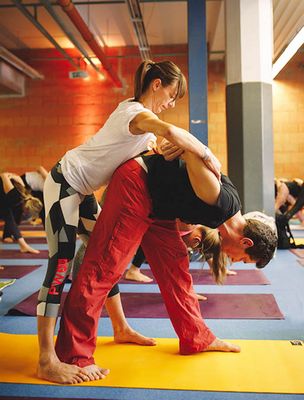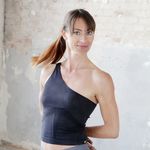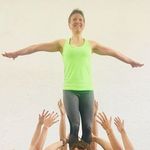Sabine: Running, cycling, functional training and fitness classes in studios - by looking at your sports profile one might get the impression they are reading about a real-life superwoman. How does that connect with yoga? Or rather, how did you find yourself on the yoga path?
Tanja: (laughing) You can add swimming, rowing (indoor) and cross country skiing to the list. Yes, I am full of power and energy! I actually came upon Ashtanga yoga by chance. But it is really a perfect match for me: I am able to build physical strength during the practice in a very focused way. The result is physical wellbeing and mental calm. In other words, a perfect symbiosis!
My yoga path actually started through Pilates. I have 25 years experience in group fitness instruction. It began with Aerobics/Step classes and then I branched out to whatever the most modern modality was at the time. Bodystyling, or whatever it was called back in the day, to barbell training, Spinning, Fatburner and such. Then I came upon Pilates, which really relieved some of the knee and back complaints I had as a result of repetitive strain from teaching all of these other fitness classes. This planted the seed for me. I was ready to move away from loud, motivating beats to a calmer, more inner-focused practice. Then, after trying a yoga class for the first time I realized that there was something very unique about that experience. I was fixed. It was so energizing to feel so complete and so present all at once. It was as if I were previously a stopped up drain which had at once become unclogged. I had to learn more. How it made a positive impact on me sexually is another story which I will save for day. I had always felt that despite training hard and eating well that something was missing in my life. Autogenes training (AT) and Progressive Muscle Relaxation (PMR) were a good start, but they came nothing close to what I found once I dove into the topics of yoga and the philosophy within the practice.
Sabine: So you still teach and practice a bunch of different types of sports. Has your general approach to these sports changed through yoga? Or has perhaps yoga had an impact on your training philosophy, for your own development and for your approach in your classes?
Tanja: Definitely! I always say that it takes a lot of tiles to make a mosaic complete. I still need to move and unwind in the fresh air: so I get out and go biking, cycling, running or mountain climbing. But I will look for any chance to get on the mat as well. This is how I manage to turn down the monkey chatter in my mind, while simultaneously mobilizing and stretching my body. Sometimes I suddenly have a solution for a problem that I had tried in vain to resolve at the end of a yoga practice. Yoga has brought about real change within me. Before I would slip on my jogging shoes to run away from the issues I was facing, now I roll out the mat and work things out by showing up. It doesn't matter what I have going on: family, house, running my business - I never sacrifice my practice! This is important to me because it grounds me.
This is a sentiment that I try to pass on to my students as well. I tell them not to get caught up with the mechanics of the practice, but rather to create a focused time and space for self exploration and discovery.
Sabine: You have mentioned that besides the physical practice, the philosophical aspects of yoga are also very important to you. Has that always been the case or did you discover philosophy through working through the physical practice? What does yoga philosophy mean to you today and which aspects are especially important to you?
Tanja: Like many of us, my gateway to yoga philosophy was the physical practice. I had been studying psychosomatics and energy work at the same time, but when I came into contact with the philosophy of Vedanta, Samkhya and Tantra during the teacher training with Ronald and Anna Trökes, I was given yet another handful of mosaic tiles to work with.
Of particular importance to me is getting past the multiple layers of social and familial conditioning, education, social norms and acceptable behaviors to find who you really are. That is the core of yoga. During my 4.5 year teacher training it became more and more clear that this was my duty. Understanding that you are are responsible for taking control of your life, and that you have no right or reason to point the finger at others, blame others for outcomes or to run away by numbing yourself with drugs. Yoga philosophy is a means of helping you see this. In example, I think the the phenomenon of burnout and the corresponding way to avoid it was already addressed in Yoga Sutra 1.31. We are talking about a more or less 2000 years old work! As easy as it might seem, I also have to be ready and willing to put in the work. It's easy to agree to, but when you are in the midst of a challenging situation, you quickly realize that it is much more convenient to blame the boss, colleagues, or whoever is within reach for your situation.
And a second very important aspect for me is Svadhyaya. For me this means to reflect on oneself continuously and to study philosophical texts and to work through them in oder to gain some insight for your life and individual situation in the moment.
Very often, however, the body needs to guide us down that path. Unfortunately, many people do not see the need for change until they feel physical pain or disruption in their daily routines. This is where the practice comes full circle. Hatha Yoga and/or Ashtanga Yoga serve both the body, and carefully seasoned with mindful breathing (which I feel that I feed quite well) with nourishment for the intellect (which I perhaps feed just enough). I find that that serving of philosophy really glows within and serves me in situations where, let's say I need to be able to let go of something that cannot be changed.
Sabine: You still have a very tight schedule with a full program. At the same time, you've known the challenges of managing a family and children with no family close by to help out. How is it possible to establish a personal daily practice under those circumstances? And how do you motivate yourself to practice knowing that you will be teaching three of four classes in the evening?"
Tanja: Yes, it requires good organization and self-discipline! (Laughs) Fortunately, I have enough "tapas", as it is called in Sanskrit. What I mean by that is that, on one hand, the concept of fire/passion can also be called asceticism/renunciation. I see myself in both variants. In other words, I have enough tapas to motivate me to get onto the mat, and enough tapas to stay off the bed or sofa. Once I recognize how good I feel after the practice, I gladly renounce the desire to be lazy!
At the same time, if I have been sitting around doing paperwork and having meetings without having had the time to practice, I am irritated and jealous that my students are able to move around when I haven't been able to. If I worked off my own energy beforehand, I am calm, in a good mood and creative. My experience has shown that it is well worth making that time to do my practice so that I can show up and be the best me possible.
Sabine: You can now feel every muscle and bone in the body with the correct medical name. Not only because of your training, but also because of a variety of injuries you have had over the years. Regardless, none of them have stopped you from practicing. How did you manage to adapt your practice so that you could keep moving without delaying the healing process? What role has the AYI® method played?
Tanja: As far as my training is concerned, it would have been great if I had not occasionally forgotten some of the really important details (laughs). Knowledge is great, and experience is sometimes even better. The truth is, it is really fun to explore the possibilities and limitations of the body. It is amazing to look at, feel and observe the ingenious way that our bodies have been constructed and their ability to heal themselves. I didn't regret or avoid training when I was injured due to improper form or execution of movement, or even due to overtraining. It was the contrary. I actually trained less intensely, more mindfully and more aware of where and how I was moving in space. I have had to pay bitterly for my overzealous drive to move more than once. For example, during my yoga teacher training. On the first day I felt that I absolutely had to go jogging in the evening and consequently pulled my LCL. As a result of that evening, I set myself in the dubious situation of having to practice with my body as it was. Which actually went astonishingly well, albeit not on a performance level. My motto became: listen to my body, carefully test my limits, use a little creativity (i.e. kneel instead of standing or sitting) and work within the range of motion or omit things that would not work. It replaced the old motto which encouraged me to push myself past my limits to win.
This is exactly the approach of the AYI® method! Looking for, creating space for specialized exercises for special needs, and individually addressing the individual as they are in the moment. The modified series is a warm invitation for people from any age group to enter the practice. Thanks to the adaptations which make the practice accessible to anyone, practicing is possible even with a torn ligament or impingement.
Sabine: I know that you have a strong belief in a crossover approach to other healing modalities and that you try to integrate elements from these different areas into your teaching. What kinds of approaches are they and how can I recognize them in your classes?
Tanja: You bring the posture that your body is used to, because the body always adapts to its environment. If someone works for hours sitting forward or spends the whole day in front of a PC, it is clear that the shoulder girdle and hip joints will have a limited range of motion. I personally feel that in the case of other physical limitations that complimenting your yoga practice with other professional support is really useful. In addition to starting off with a modified practice you can work with an osteopath, physiotherapist, Rolfer, speech therapist and/or body worker to help increase mobility in the structures that have limited ROM. Over the years I have met a handful of good therapists, and I know where I can recommend my clients of students and know that they will be in good hands.
Sabine: Going back to your teaching style: you said that you learn best kinesthetically, and that you need a certain amount of freedom to be independent from your teacher. Why is that? How do you implement that with your students?
Tanja: As far as active learning is concerned, my spirit of lifelong learning certainly plays a role for me, which leads me to try out all kinds of things on the mat / in front of the mirror / on the TRX / on the wall bars or on the pull up bar. It is always with the purpose of seeing how far I can go, or how effectively I can work. For example, I will play around to optimize my hip flexion. Or I will tie myself up to the wall bars to find out how to get into and out of Supta Vajrasana most effectively. Lately, I have also discovered fascia training and functional training and am quite inspired by them. A lot of the stuff I had learned in the past, but, for example, preparing for or with counterposes and stretching before practicing have informed my practice because it shows me a different yet equally effective way to do the pose. I really enjoy doing this, and I feel that I can embody my practice more when I work in such a way. Trends like these give rise to new ideas and impulses that keep you curious. What I like to do is to work with these things myself, and then use some parts of these ideas in my classes. Just like a fitness studio will always have new class offerings. Maybe it works well, maybe its a flop, but you don't know unless you try. If it doesn't work, move on to something else.
With the Mysore class, it goes in a very similar direction. Every day is different, every day we become a little older, you may feel a tweak here or there. If I simply follow the lead of a teacher, I am moving robotically and have deemed my body as a stranger. I am very independent and I want to empower my students with a similar sense of agency when they are practicing. That is, I would like to convey to them that they are responsible for themselves and their practice, and that they will benefit a lot more if they actively shape their own practice instead of mindlessly following the teacher.
Sabine: You have also recently joined the AYI® Teacher Training team. Why did you decide to become a trainer for AYI®?
Tanja: Well, actually, Ronald persuaded me... After having assisted a training week, I realized how much joy it brought me to be part of that. So, I decided to go a little deeper into the material and to become a teacher trainer myself. I have previously taught short weekend training modules, but now I am really excited about passing on the AYI® method. I find this system exciting. I have known Ronald for over 10 years now and I have seen how the method has developed and improved continuously over time and for that reason I know I can stand 100% behind it.
Sabine: It sounds as if you couldn't ask for a better set up. In regard to your first group of teacher trainees: What is most important for you? What do you want to be able to convey to your trainees?
Tanja: The keyword is mindfulness. I really want to share the art of mindfulness. I would like to help my trainees establish a solid personal practice which they can then pass on to their own students. As already mentioned, I have paid dearly over the years with different injuries. At first I never knew about alignment. It was unfortunately not something that I was explained, or perhaps I didn't have the ear to listen for it then? Because of this, I want to do better! I want to pick up each trainee where they are and guide them through an ever-evolving asana practice that meets the person at the moment. Beginners as well as advanced students are welcome in my training.
Additionally, I feel that practical knowledge can also be learned in a beautiful setting. That is why I'd like to offer my AYI® trainings in wonderful surroundings and in a positive environment. It is best to learn when you feel good. Study and holiday don't have to be mutually exclusive. For our first week I've chosen a great country house in a beautiful setting in Italy. The other extended weekends will then take place with me in the beautiful Nuremberg countryside. Here I will take care to make things familiar and comfortable.
Sabine: You might be making some of us green with envy! Another question about your teaching style: You say that authenticity is the first priority in your teaching. What does this mean for you and your courses? How could I imagine the real Tanja, exactly?
Tanja: The most important thing for me is that you do what you love! I have chosen what I love as a profession and it comes out naturally in my teaching. For me authenticity also means to teach my own experience, integrated into the tradition. Yoga is authentic. It's not about pampering yourself, it's about being disciplined and doing the work to be more aware of yourself and your body. Looking at yourself and reflecting time and time again, and sharing what you have learned. For this reason, it is never certain who will take something from a lesson I teach: some may be totally inspired, others less, but in the end it is about the offering, not the teaching. And, it means that fun should also be allowed! Life is hard enough, who came up with the idea that we have to be super serious and look so grumpy in yoga class? Now and again I will say something ridiculous to bring some lightheartedness back into the room. That's just me being me!
Sabine: While your students probably know this best, I can certainly imagine your presence and could imagine really appreciating such an experience. I wish you all of the best with your first group of trainees and a great start. And if you have any photographic examples of how study and holiday work out, send a few our way!
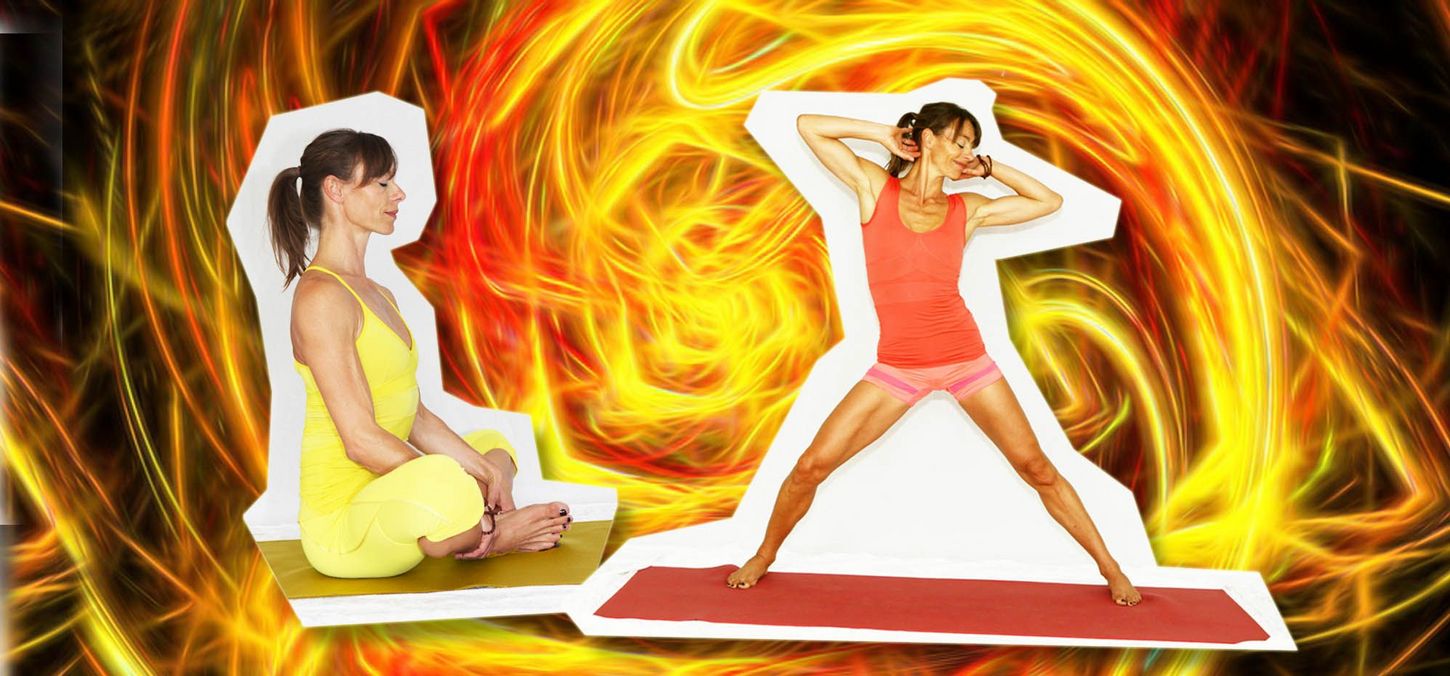

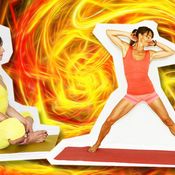
 Tanja Launicke
Tanja Launicke
 Dr. Sabine Nunius
Dr. Sabine Nunius
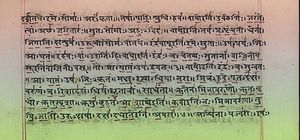
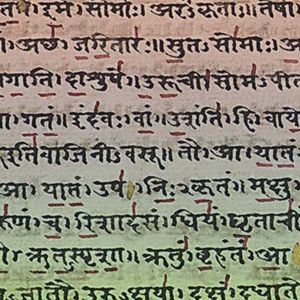
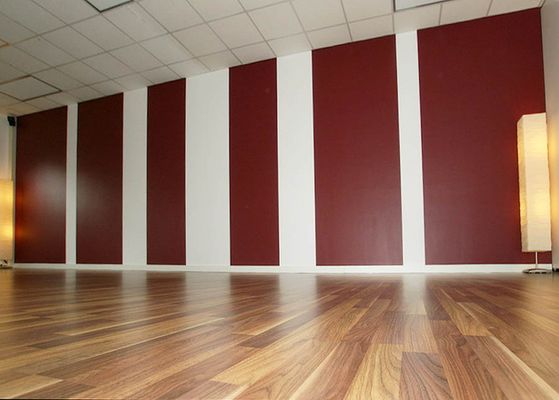
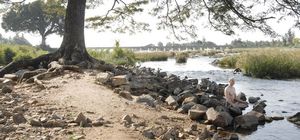
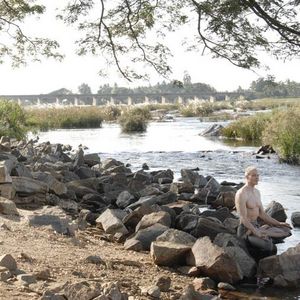
 Dr. Ronald Steiner
Dr. Ronald Steiner
